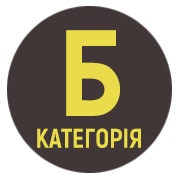REPRESENTATION OF ACADEMIC DISHONESTY IN ENGLISH-LANGUAGE CARTOONS
DOI:
https://doi.org/10.32782/folium/2024.4.17Keywords:
cartoon, verbal means, non-verbal means, plagiarism, fraud, cheating, copyrightAbstract
The article deals with the study of academic dishonesty and its representation in English-language cartoons, in which caricature and grotesque means are used to exaggerate and emphasize the negative aspects of phenomena. The cartoon, through its synthesis of visual and textual elements, is a powerful tool for revealing and highlighting the problems of academic dishonesty that occur in the modern academic environment. The English-language cartoons from the websites Academic Integrity cartoons and comics and Plagiarism cartoons and comics were chosen as the research material. The purpose of the article is to investigate the themes of English-language cartoons dedicated to academic dishonesty, focusing on their verbal and non-verbal components. Exaggerated features and grotesque images make immoral acts not only shameful, but also funny, as a result of which the problem of academic dishonesty becomes accessible to the general public. The interaction of verbal and non-verbal components in a cartoon makes the meaning as clear as possible. Academic dishonesty is the antipode of academic integrity – a set of ethical principles and rules determined by law, which should be followed by participants in the educational process during learning, teaching and carrying out scientific (creative) activities in order to ensure confidence in the results of studies and/ or scientific (creative) achievements. Various forms of academic dishonesty, such as plagiarism, exam cheating, data falsification and self-plagiarism, are the subjects of sharp satire. Verbal components of the cartoon explain the content of the picture with the help of captions and the characters’ speech bubbles. Punctuation marks (an exclamation mark and a question mark) give an emotional-expressive connotations to the information being conveyed. The characters’ facial expressions and gestures help decode their emotional states. The analysis of the cartoons demonstrates their focus on emphasizing the importance of academic integrity in research and educational activities and encouraging the academic community to maintain high standards of integrity.
References
Академічна доброчесність. URL: http://surl.li/goas
Демидчук Л. Причини та прояв дій з академічної недоброчесності в закладах освіти. Підприємництво та логістика в умовах сучасних викликів: матеріали ІІ Міжнар. наук.-практ. конф. [Тернопіль, 26–28 трав. 2022 р.]. Тернопіль: ЗУНУ, 2022. С. 225–229. URL: http://dspace.wunu.edu.ua/handle/316497/45875
Закон України «Про Освіту». Стаття 42 «Академічна доброчесність». URL: http://zakon0.rada.gov.ua/laws/show/2145-19/page3
Кодекс академічної доброчесності Волинського національного університету імені Лесі Українки. 2023. URL: https://ra.vnu.edu.ua/wp-content/uploads/2023/06/Kodeksakademichnoyi-dobrochesnosti.pdf
Коляда Е. К., Калиновська І. М. Академічна культура дослідника і реалізація комунікативної стратегії толерантності в англомовному академічному письмі. Нова філологія: збірник наук. праць. Запоріжжя, 2022. № 85. С. 131–137.
Омельчук С. Бути чесним у навчанні й науці: експрес-курс з академічної доброчесності для здобувачів вищої освіти: навч. посіб. Херсон: ОЛДІ-ПЛЮС, 2021. 80 с. URL: http://surl.li/rdjee 7. Публікаційна етика. URL: https://ecdev.com.ua/uk/publication-ethics
Федік Ю. М. Ключові підходи до дослідження сучасних англомовних карикатур. Вчені записки Таврійського національного університету імені В. І. Вернадського. Серія «Філологія. Журналістика». 2021. Т. 32 (71), № 2, ч. 1. С. 224–229. DOI 10.32838/2710-4656/2021.2-1/38
Юрко Н. А., Стифанишин І. М., Проценко У. М. Академічний плагіат: основні різновиди та дискусійні аспекти. ΛΌГOΣ. 2020. № 7. URL: https://www.ukrlogos.in.ua/10.11232-2663-4139.07.07.html DOI 10.36074/2663-4139.07.03











